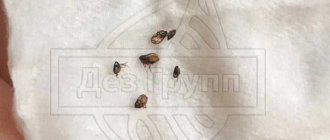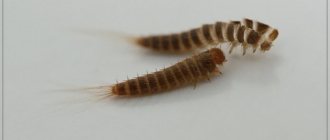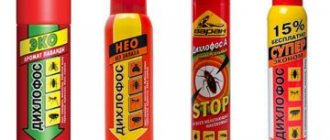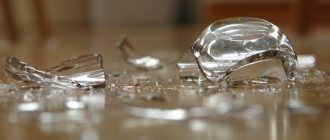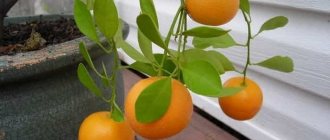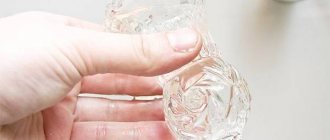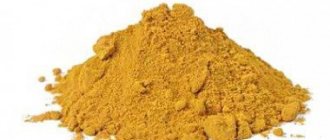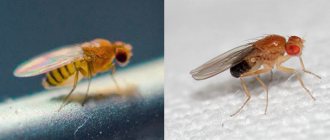How fleas get into an apartment
It is believed that fleas enter a home only from animal fur. However, it is not. Insects often move into the apartment from the basement or attic. In addition, fleas can easily be carried on clothing, especially if you live in a private home. Parasites can also enter from a neighboring apartment through cracks and ventilation or from mice and rats.
Types of fleas that appear indoors
Fleas are perfectly adapted to live near humans. Any variety of them can live in a living space. The most common:
- feline;
- canine;
- earthen;
- rat.
In the absence of pets in the room, fleas have adapted to survive by feeding on the blood of people.
Why fleas are dangerous to humans and where they hide
Jumping insects appear to be relatively harmless creatures. However, this illusion is deceptive. Flea bites cause severe itching. They can cause an allergic reaction, including the formation of ulcers. In addition, fleas carry such dangerous diseases as encephalitis, tularemia, plague, listeriosis, salmonellosis, and some types of typhoid. Although the likelihood of becoming infected after a bite is small, it still exists, so it is necessary to rid your home of parasites as soon as possible.
The entire apartment will have to be treated. Fleas are extremely jumping and quickly move from place to place. They do not have a permanent habitat, although accumulations of insects are more often observed where domestic animals like to rest.
How to find a flea nest in an apartment?
To identify areas of increased concentration of parasites, use sheets of white paper. They are placed near water sources (on the floor in the bathroom and kitchen), next to pets' beds, near beds in the bedroom and nursery. The proximity of the nest is assessed depending on the number of insects caught on the paper.
You should also be wary if the pests are on the wall at a height of more than 40 centimeters from the floor. There is probably a nest nearby or a path to entry into the room (for example, a ventilation hole).
How long does a flea live without an animal in an apartment?
In favorable conditions, insects live for about three months. If you create an environment in your home that is unsuitable for survival, fleas can hibernate. Waking up, when conditions change to more suitable ones, the parasites immediately look for a victim. The most suitable shelter option for them is six pets, but even in his absence they survive by hiding in carpets and furniture.
Product reviews
- “My husband and I have a dog. We would never have thought that our pet would have fleas, but it happened. The dog loved to lie on the sofa in the living room, which is where I first noticed the fleas. I began to have trouble sleeping at night and so did my husband. It turned out that not only did our dog have fleas, but these pests had also spread throughout the apartment. We decided to deal with this ourselves. It took us a long time to choose which product to buy. The choice fell on "Get". The product is not cheap, but it fully justifies its price. Over the course of three months, we treated it a couple of times with this drug, and also carried out wet cleaning. They didn't forget about the dog. Now after every walk we inspect her, and, if necessary, we wash her in the bath. I don't want this horror to happen again. But the remedy is good. It helped” - Alexandra, Novgorod.
- “We recently noticed fleas in the apartment. The children began to complain of night bites. Soon she discovered a nest around the corner of the sofa, where there was a crack in the wall! We hurried immediately to get the flea remedy. We chose Raptor. I sprayed all the cracks with this aerosol and washed the floors with bleach. The result, to be honest, was amazing: 2 days and these pests are gone . The children sleep peacefully!” — Margarita, Moscow.
- “My cat loves to go for walks. I am a pensioner, so I have no one except a cat. Recently my Musya began to itch suspiciously. I was worried, but then I thought that all cats itch. But then something started biting me at night. I examined Musya: she had fleas! The store recommended Chlorpirimac. They explained to me that this product is used to spray the infected areas: walls, floors. Soon the fleas disappeared” - Irina, St. Petersburg.
What substances are included in effective anti-flea products for the home and for animals?
When choosing a drug, it is worth considering that fleas, like many other insects, have a chitinous shell that protects them from the harmful effects of the environment. In the composition of the product for the destruction of parasites, you should pay attention to the following ingredients:
- Pyrethrins are a group of insecticidal components of natural origin that have a nerve-paralytic effect on insects. Low toxicity, can be used to rid pets of parasites (externally).
- Pyrethroids (permethrin, cypermethrin, deltamethrin, etc.) are compounds related to pyrethrins that have a more powerful effect. Toxic to humans and animals, affecting the nervous system. Before use, remove people and pets from the premises.
- Imidacloprid is a neonicotinoid insecticide that paralyzes insects.
- Nitenpyram is a drug for internal use used to rid animals of fleas.
- Selamectin is a semi-synthetic drug. Suitable for treating adult, healthy pets.
- Fipronil - used to treat animal hair. It is characterized by fast and effective action.
At the initial stage of infection of a premises or during preventive treatment of pets, preference should be given to the least toxic substances.
Do I need to destroy wasps?
Wasps damage ripe fruits - they spoil large ones, and eat small ones completely. Sometimes they can be left without any harvest at all. In beekeepers' farms, the invasion of striped pests can affect the number of bees: wasps hunt all insects, feed on them, and also feed their offspring. The venom from a bite can cause a powerful allergic reaction, which leads to unpleasant consequences for people and pets - swelling, intoxication and even death. To avoid attracting insects, do not store food in a place accessible to them. Leftover food should be disposed of using containers with tight-fitting lids. It is worth installing screens on the windows and doors of all rooms, which minimizes the possibility of a person colliding with wasps.
Advantages of self-made devices:
- safe, environmentally friendly protection against insects,
- Possibility of use indoors and outdoors,
- possibility of repeated use of each trap,
- low cost.
Disadvantages include the need for periodic cleaning, regular replacement of bait, and the inability to destroy the entire population at once.
Wasp control should be carried out only if they really harm the farm or pose a danger to humans. In other situations, they are excellent helpers for gardeners, getting rid of many pests. Properly placed traps throughout the area (the more, the better) will effectively get rid of the problem.
Which product to choose to fight fleas
When choosing a drug, consumers focus on cost, ease of use and cost-effectiveness. An important factor is also safety for humans and animals. Popular forms of insecticide release are aerosols, solutions and ampoules. Folk remedies are widely used to combat fleas.
Aerosols
New generation products in aerosol form are harmless to humans and animals and are easy to use. Their disadvantages are high price and high consumption. The famous “Dichlorvos” will cost less, but is quite toxic and has an unpleasant odor. When using the spray, it is advisable to use gloves, a respirator and safety glasses.
Solutions
The preparations are in concentrated form, diluted with water and used for cleaning floors and treating surfaces. Safe for people and animals, practically odorless. Economically used.
Ampoules
Relatively inexpensive and easy to use. The contents of the ampoules - a highly concentrated insecticide solution - are diluted in water and used for wet cleaning and spraying.
Folk remedies
Due to low efficiency, they are more often used for prevention, in cases of minor infection or in combination with industrial drugs. They are distinguished by budget cost and safety.
If there is a low concentration of insects in the room, you can only get by using traditional methods. In other cases, you will have to resort to using household chemicals to quickly get rid of parasites.
Purchased flea products in the apartment
Industrial insecticides are highly effective, but are toxic to humans and domestic animals. Let's look at the eight most popular drugs for fighting fleas in the apartment.
- "Raptor". The product has a nerve-paralytic effect, leading to the destruction of the insect population.
- "Get." A universal insecticide that helps get rid of not only fleas, but also cockroaches, bedbugs, moths and ticks.
- "Raid". The product is in the form of an aerosol, characterized by high efficiency and rapid action.
- "Dichlorvos". Time-tested budget drug. Modern versions, such as Dichlorvos Neo, no longer have the strong aroma characteristic of their predecessor.
- "Karbofos". A popular universal drug with an affordable price. Effective against fleas, ants, cockroaches, bedbugs and other domestic insects.
- "Butox 50". Universal action insecticide. Rids the house of fleas and other pests. The active ingredient is deltamethrin.
- "Cifox." Affordable and very effective. The drug is available in liquid form.
- "Biorin." Insecticide for professional use. Reviews note its high effectiveness. As a precautionary measure, it is necessary to protect the skin, respiratory tract and mucous membranes from contact with the product.
Folk remedies for fleas in the apartment
If there are children living in the house, the choice of drugs is very limited. In this case, you should turn to time-tested folk remedies. Their effectiveness is lower than that of industrial insecticides, but they are quite capable of ridding your home of pests.
Salt
Finely ground salt will help rid indoor carpets of fleas. On contact, it destroys the skin of insects.
Mode of application:
- fill a spice jar with salt;
- thoroughly sprinkle all the carpets in the house, rubbing the crystals as deep as possible into the pile;
- leave for 1–3 days;
- vacuum thoroughly;
- if necessary, repeat the procedure after 1-2 weeks.
Salt can corrode the paws of pets, so when treating carpets, pets should be removed from the room.
Soda
The method is similar to the previous one. Treatment with soda helps destroy insects in all stages of development, from egg to adult. For best results, use a mixture of salt and soda in a 1:1 ratio.
How to use:
- Apply the mixture evenly to carpets, animal bedding, and upholstered furniture;
- leave overnight;
- vacuum.
Repeat the procedure every 4-5 days for two weeks.
Sagebrush
The plant has been used as an insecticide since ancient times. It has a pungent odor that is unpleasant to blood-sucking insects. Used in tincture, oil or decoction form. In addition, freshly harvested or dried grass is laid out on the floor in rooms to repel fleas.
Wormwood tincture for fleas
You can purchase wormwood tincture at a pharmacy or prepare it yourself by pouring vodka over the dry herb and letting it brew for two weeks. The finished product is dissolved in water and used for washing floors and treating the hair of cats and dogs.
Wormwood oil for fleas
Sold in pharmacies. At home, the remedy can be obtained by pouring dry wormwood herb with olive oil and leaving it for 10 days in a cool, dark place. Used as drops on the withers to get rid of fleas on pets. To repel insects, small containers with wormwood oil are placed on the floor of the house.
Wormwood decoction for fleas
To prepare a wormwood infusion, boil the herb in a pan of water for 5 minutes and then leave to cool completely. The resulting product can be used to treat animal hair, carpets, and bed linen. The decoction is also added to water for washing floors.
Tar soap for fleas
Tar soap is used to treat fabric surfaces. It is permissible to wash pets with tar-based shampoo to rid them of parasites. However, you should not use it often: using such soap increases the likelihood of animals getting skin cancer.
Vinegar for fleas in the apartment
Insects cannot tolerate the taste and smell of apple cider vinegar. Therefore, from time to time you can give your cat or dog vinegar baths (1 glass of essence per 1 liter of water at a comfortable temperature) or treat your pet with a spray (2 glasses of apple cider vinegar per the same amount of water). The specific smell will disappear immediately after the wool dries.
Boric acid
An inexpensive, low-toxic product that helps rid a room of insect larvae. Apply to carpets and upholstered furniture. After 48 hours, all surfaces are cleaned with a vacuum cleaner. The method is quite gentle, so repeated treatments will be required.
Pyrethrum for fleas
Pyrethrum is an insecticidal agent based on chrysanthemum extract. Available in powder or spray form, as well as animal shampoo. Acts as a repellent and neurotoxin. Suitable for surface treatment and floor cleaning.
Bleaching
Bleach not only affects adult insects, but also helps get rid of their eggs. Carpets and animal beds are treated with a bleach solution. It is also used for washing beds and bedding. Bleach is toxic to humans and pets and will fade colored fabrics by acting like a bleach.
Chamomile
Chamomile filter bags are sold in pharmacies. The infusion is used for washing floors, treating fabrics and washing animal hair.
Hellebore water
Available in the form of an alcohol tincture for external use. Apply a small amount to the pet's wet fur, then rinse with water. When working with hellebore water, it is recommended to use rubber gloves. The product is poisonous and should not be ingested.
Tansy
Tansy is used as an infusion for washing floors and walls. It is also good for disinfestation of pet bedding and beds. To prepare the infusion, the leaves and flowers of the plant are poured with hot water and allowed to steep until completely cool.
Essential oils for fleas in the apartment
To repel fleas, essential oils are applied directly to the skin or treated with a solution on clothes, carpets and upholstered furniture. To do this, dilute 25 drops of oil in 5 liters of warm water. For pregnant women and children, the method should be used with caution.
Lavender
Insects cannot tolerate the lavender smell. The effectiveness of this oil has been confirmed by research at Ohio University against all stages of pest development.
Eucalyptus
It has a repellent effect due to its characteristic menthol aroma. Often used in mixture with other oils (eg citronella).
Pennyroyal
The plant itself, in fresh and dried form, is also used as a repellent. You cannot treat wool with pennyroyal essential oil - it is toxic to animals.
Lemongrass
It is used to repel insects alone and in mixture with other oils. Has a pleasant lemon scent.
Cedar oil
One of the rare oils that has not only a repellent, but also a toxic effect on fleas. Use with caution to treat pets, choosing only low concentrations of the drug.
Basil oil
Safe for people and animals. Repels fleas with a specific scent.
Thyme oil
Has a noticeable toxic effect on insects. It has wound-healing and bactericidal properties.
Rosemary oil
Dangerous for cats, but suitable as a solution for washing dogs. Repels fleas and heals wounds from bites.
Clove oil
Used for dogs as a repellent (you can drop a couple of drops on the collar) and when washing beds or bedding. Toxic for cats.
Tea tree oil
A popular room treatment product. A few drops of oil are added to a container of water to wash walls or floors. For animals it is used as a means for the withers. When first used, you should conduct a sensitivity test: apply one drop to your pet’s skin and observe the reaction.
Signs of infection in an apartment building
- Pets can bring fleas into the home, so it is important that the cat/dog is checked on an ongoing basis. Examine areas of the body that are difficult for your pet to reach
Look for fleas behind the ears, on the withers and front legs. Look for bloody spots on your pet's skin, as these are flea droppings left behind by the insect. Excessive itching is a reason to visit the veterinarian.
- To find out for sure that your cat/dog's fur is free of fleas, give your pet a bath and carefully inspect the used water for brown-red insects. Rinse the fur and skin thoroughly and see if anything falls into the water. If you notice fleas slithering off your pet's fur or skin, you should contact your veterinarian immediately.
— Flea droppings are easy to spot on different surfaces. You can use a damp cloth on the floor for this purpose. If you have carpet in your home, wear white socks and walk on it to check the color of the soles later.
— If you don’t have a pet, don’t fall into the misconception that you are protected from fleas. They can just as easily take up residence in your apartment, clinging to your clothes when you walk outside the house.
Preparing the premises for disinfection
Before starting the fight against parasites, it is necessary to properly prepare the room. Make sure you are dealing with fleas first.
First step: identifying the insect and identifying the source of infestation
Externally, fleas are easy to distinguish from other insects. They have a characteristic flattened body of yellow, brown or black color and four pairs of legs, one of which allows them to jump up to one and a half meters in height. Flea bites are usually localized in the leg area, arranged in a chain and are very itchy.
Favorite habitats of parasites:
- carpets and upholstered furniture;
- bed sheets;
- pet hair and bedding;
- Stuffed Toys;
- dusty, hard-to-reach spaces under furniture.
Fleas move very quickly, so disinsection of one part of the apartment is not enough. The entire room will have to be treated. It is advisable to enlist the support of your neighbors and get rid of annoying insects at the same time.
Apartment processing rules
Treatment of your home will be much more effective and safe if you follow the rules for preparing for the disinfestation event.
- Remove children and pets from the premises. If there is an aquarium in the apartment, cover it with a thick cloth and turn off the compressor.
- If possible, move furniture away from the walls. Send bedspreads, bed linen, pillowcases for washing.
- Wash the floor and walls thoroughly.
- Proceed to treat the premises with the selected insecticide, following the safety rules and dosage specified by the manufacturer.
- After finishing, leave the room for the maximum possible period of time, from several hours to a day. When you return, ventilate the apartment well.
When working with an insecticide, protect your skin and respiratory tract: use gloves and a respirator.
How to remove insects from a sofa, upholstered furniture or clothing
To combat fleas that have settled in clothing or on the upholstery of upholstered furniture, use dishwashing detergent slightly diluted with water and whipped to a foam. The foam is carefully applied to a slightly damp surface and left for 15 minutes. Then the remaining product is washed off and the fabric is dried with a hairdryer or cotton cloth.
Instead of dishwashing detergent, you can use brewer's or nutritional yeast, which is rubbed dry into the surface and left for a few minutes. You can easily get rid of yeast residues using a vacuum cleaner.
Further recommendations after processing is completed
After finishing the treatment, it is necessary to ventilate the room for at least a couple of hours. Then all horizontal surfaces should be wiped with soapy water, the dishes should be washed, and bedding should be washed at a temperature of at least 60 degrees. After cleaning the apartment, the vacuum cleaner bag should be thrown away or washed immediately. If possible, it is advisable not to wash the floors and walls in the apartment for several days. After a week, a thorough cleaning should be done, washing all surfaces.
How to make your own flea traps
There are several options, you can choose what suits you best.
Trap with a lamp
- Take a regular table lamp. Place a plate under its light (preferably with a large diameter, a very deep one is not needed).
- Fill a plate with water and add whatever you use to wash dishes (about a teaspoon, but more is better than less).
- Stir gently (to prevent foam from forming).
- Leave the lamp on overnight.
- If possible, place traps around the apartment.
- In the morning you will find a lot of dead fleas in the plate.
Trap with cups
- Instead of a plate, take glasses and fill them with the same soap solution.
- Place containers on all warm windowsills.
- In the morning there will be dead insects floating in the glasses.
Candle trap
- Light thick candles at night in areas where fleas accumulate. Watch the candle (don't miss the moment when it burns out, make sure the spark doesn't bounce off onto the carpets or furniture).
- Fleas will jump into the light and stick to the wax. Then just throw away the candle.
Trap with candle and water (if you have a small candle)
- Fill a plate with soapy water (as in the case of the first trap).
- Place a floating candle in the center. Fleas will jump into the light and drown in the liquid.
- Don't forget to throw out the water in the morning.
TV trap
- Fill the baking tray halfway with soap solution.
- Place a baking sheet in front of the TV (if there are several TVs, place a baking sheet in front of each).
- Leave the TV on overnight (mute).
- In the morning, throw away the water containing the dead fleas.
Boric acid
- Distribute evenly over the entire carpet, rug, or bedding.
- Leave the floor covering for 2 hours (preferably more), make sure that no one enters the room.
- Vacuum the carpet.
- It is better to also throw away the dust bag from the vacuum cleaner so that the surviving fleas do not return back to the apartment.
Professional pest control
Calling a special service will require money, but only in this case the effect will really be long-lasting and guaranteed. At the first visit, the specialist will inspect, assess the situation and set a treatment time for which the room will need to be prepared.
Disinsection is carried out in one of three ways:
- fine spraying;
- hot fog;
- cold fog.
The most budget option is fine-droplet spraying. During the disinfestation process, the solution is sprayed using an electric or mechanical sprayer.
When treating with cold or hot fog, irrigation is carried out using a generator, during which fleas and their larvae die almost instantly. The difference in the methods is in the temperature of the insecticide solution. Hot fog is more effective due to the heat factor, to which insects are sensitive, but can damage furniture, clothing or room decoration.
How to prevent fleas in the house?
To protect your apartment from the appearance of unpleasant insects, follow three simple rules:
- Treat your pet's fur with flea medications as a preventive measure and periodically check for parasites.
- Wash outdoor shoes frequently to prevent pests from entering your home.
- Do wet cleaning once a week or more often. Pay special attention to corners, baseboards, and the space under furniture.
Following these recommendations will help prevent pests from infesting your home. In addition, if you live on the ground floor, contact the management company with a request to concrete the floor in the basement to avoid the breeding of earth fleas, which then spread throughout the apartments.
Along with the work of professional exterminators, the most effective way to get rid of parasites is to treat the premises with industrial insecticides. The use of folk remedies also gives results, but less long-lasting and effective. It is imperative to determine the route by which fleas enter your home. After exterminating insects, special attention should be paid to preventing their reappearance, especially if you live on the first or last floor.
Fighting methods
Only a powerful and widely available remedy will help you get rid of parasitic insects. At the same time, it must comply with safe standards of use.
Step-by-step instructions will help you thoroughly remove fleas:
- The first step is to vacuum all corners of the apartment. This can prevent further spread of the infection. Otherwise, deliverance will turn into a circle of hell: every time a fertilized female will give birth to offspring.
- The next step is washing. Throw the bed mattress, curtains, curtains into the washing machine.
- Next, pay attention to the walls and floors. They should be washed, perhaps with bleach. It is highly recommended to repeat this procedure every week.
To get rid of fleas forever, you should resort to a product with chemicals. Before using the product, you should:
- Think about where to stay for 3 or 4 hours. It is at this time that the action of the product will occur.
- Before this, you also need to tightly close the doors, windows, and ventilation openings in your apartment.
- Don't forget about relapse. Plan ahead for disinfection of your apartment to avoid re-infection.

